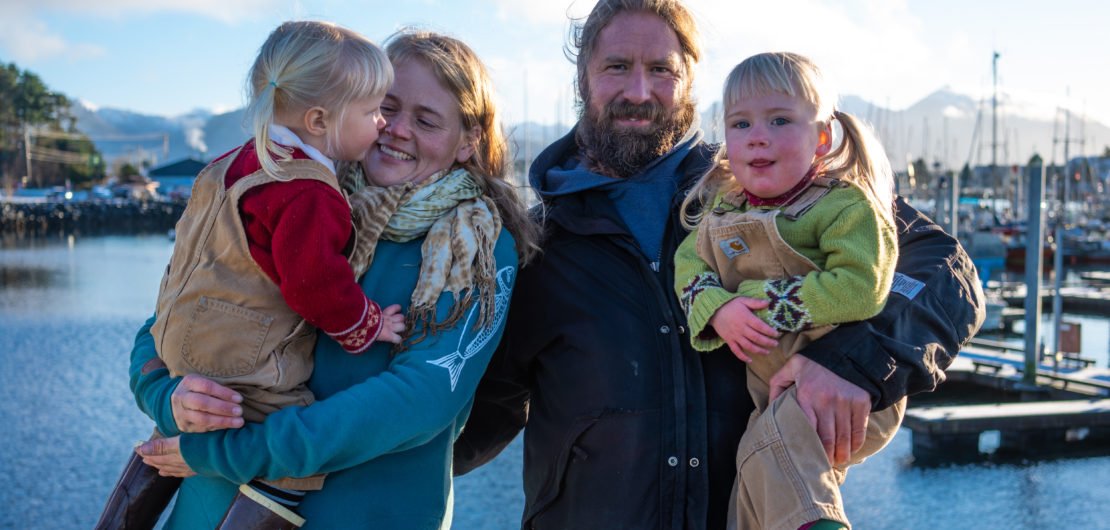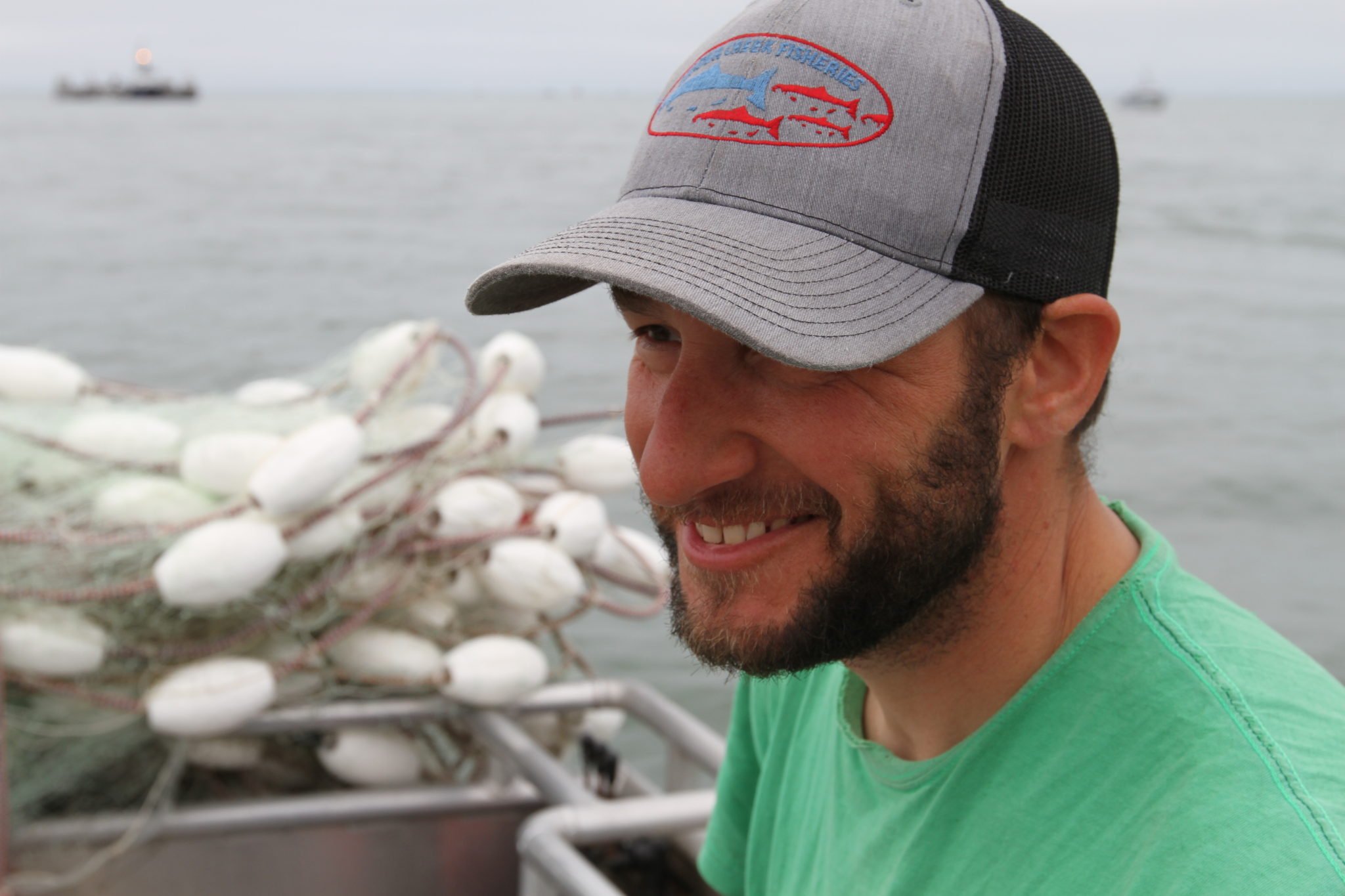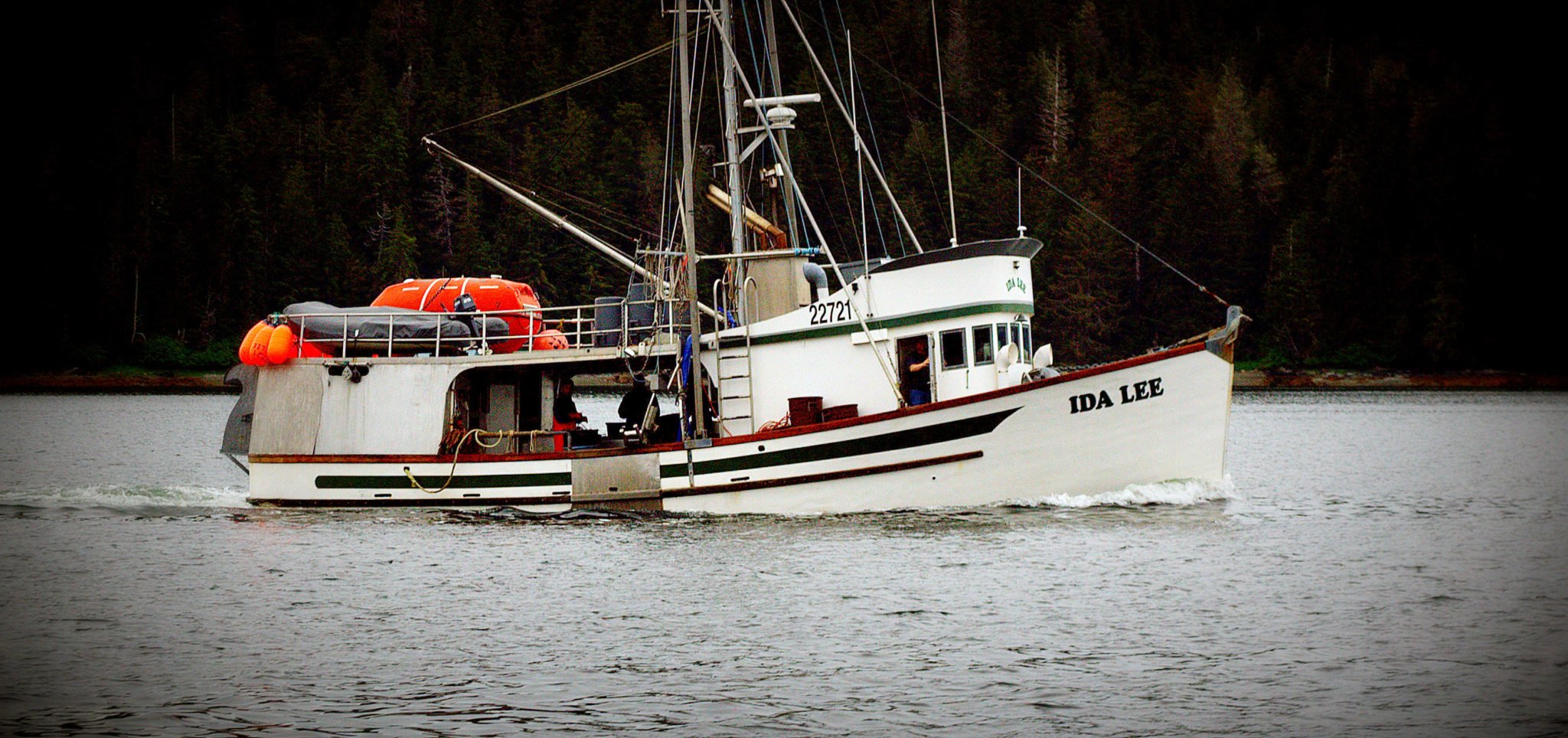Connecting people to salmon during COVID-19
The Kyle Family, Sitka Salmon Shares fisherman-owners from Sitka. (Courtesy of Sitka Salmon Shares)
Some fast food restaurants in the Lower 48 have stopped serving hamburgers. Meatpacking plants have shut down. Grocery stores are frequently sold out of flour and rice. But Americans can buy Alaskan seafood directly from the fishermen who caught it — and, in increasing numbers, that’s what they’re doing.
Steve Kurian, a Bristol Bay fisherman and owner of Wild for Salmon, while fishing in Bristol Bay on a recent year. (Courtesy of Wild for Salmon)
We spoke with direct marketers and Community Supported Fisheries (CSFs) who focus on three different areas: Alaska, the Midwest, and the East Coast. In the time of COVID-19, the first priority for all three was ensuring the health of their staff and their customers. Next, they’re working to adapt creatively to the ways the COVID-19 pandemic has, almost overnight, changed the marketplace. For direct marketers, those changes have meant an increase in some kinds of sales.
Sitka Salmon Shares fisherman-owner John Skeele pulls in a king salmon. (Courtesy of Sitka Salmon Shares)
Sitka Salmon Shares started out as a fish-box-selling fundraiser for the Sitka Conservation Society, a Sitka nonprofit, 11 years ago. Now it has 10,000 members and is “by the number of members one of the largest Community Supported Fisheries in the U.S.,” said Kelly Harrell, Chief Fisheries Officer for the organization.
Harrell said one of the first things Sitka Salmon Shares did as the pandemic took hold was establish baseline prices for its 23 fishermen owners, 19 of whom are out of Sitka and 4 of whom are out of Kodiak, in order to give them peace of mind.
During COVID-19, direct sales have become by far their strongest sector.
“Like a lot of direct marketing businesses, we’ve seen an uptick in sales that we’re really happy about,” said Harrell. “But we’re not planning long-term for that kind of increase, based on the economic uncertainty that we face.”
Sitka Salmon Shares fisherman-owner Ryan Horwath holds up a jig-caught black rockfish from Kodiak. (Courtesy of Sitka Salmon Shares)
Since the pandemic, Sitka Salmon Shares has also launched a “Fishermen’s Fund” — being seeded, right now, with t-shirt sales — that will essentially become checks divided across the fleet: a “fishermen’s stimulus package” not tied to harvest.
“We’re trying to do things to create value for fishermen that are not directly tied to their harvest,” Harrell said. “This year and in future years, that harvest is increasingly uncertain.”
Steve Kurian, a Bristol Bay fishermen who owns Wild for Salmon, which distributes out of Pennsylvania, said COVID-19 has meant big changes. For the last 15 years he has sold Leader Creek sockeye out of Bristol Bay, as well as halibut, black cod, and ling cod from Southeast Alaska, king crab from Dutch Harbor, and other Alaska seafoods as well.
Steve Kurian, a Bristol Bay fisherman and owner of Wild for Salmon, while fishing in Bristol Bay on a recent year. (Courtesy of Wild for Salmon)
When the pandemic took hold, Wild for Salmon shut down its brick and mortar store, moved to only curbside pickup, and stopped going to farmers markets. Now, their labor is focused on other kinds of sales.
“Online and wholesale orders went through the roof, so we had to really flex to maintain getting all the orders out on time,” Kurian said.
Since the pandemic began, he said, online sales have gone up 300 percent. Wholesale orders went up 200 percent.
Steve Kurian, a Bristol Bay fisherman and owner of Wild for Salmon. (Courtesy of Wild for Salmon)
Here in Alaska, Alaska-focused direct marketer Alaskans Own (AO) is kicking off its marketing campaign. Alaskans Own is a Sitka-based CSF run by the Alaska Longline Fishermen’s Association (ALFA) that markets, primarily, to Alaskans. Less than one percent of the seafood caught in Alaska stays in Alaska, said ALFA executive director Linda Behnken. AO is working to change that.
“Alaska is a tough market, in a lot of ways, but it’s really where we would like to build connections,” said Behnken. “Alaskans love Alaska seafood, but you don’t always see connections between people who love Alaska seafood and the fishermen who catch it.”
The Ida Lee, a boat in the Alaskans Own fleet. (Photo by Eric Jordan.)
As Alaskans Own’s name suggests, the majority of its subscribers are in-state, though some live elsewhere. AO delivers salmon (hook and line caught), halibut, rockfish, crab, shrimp and more, all processed by local processers.
“This year more than ever, the CSF approach is really important. Because restaurants have closed, the prices to fishermen have really dropped,” Behnken said. “We’re hoping to partially replace restaurants with direct to consumer delivery, and to get more people hooked on great Alaska seafood so that Alaskans keep eating seafood both at home and in restaurants once the restaurants reopen.”
One of their new offerings will be Zoom sessions with seafood chefs so the chef and subscribers can cook “together,” with the chef walking customers through cooking seafood step by step.
Fishermen in the Alaskans Own fleet — Linda Behnken, executive director of the Alaska Longline Fishermen’s Association, AO’s parent organization, at right — haul in halibut. (Photo by Josh Roper photography.)
“We’re looking for some new fun ways to engage more people so more people have access to great Alaska seafood,” Behnken said. “And to help people be that much more connected to the fishermen, to the seafood, and to be comfortable cooking the fish themselves — to do a good job and enjoy it to its utmost.”
Alaskans Own has also launched a seafood donation program this spring and, with support from local processors, has been delivering portioned seafood to Sitka families in need and wellness organizations each week since the pandemic began. ALFA’s fishing members are donating the fish, Seafood Producers Cooperative and Sitka Sound Seafoods are processing the fish, and contributions from Silver Bay Seafoods, the Sitka Legacy Fund, and charitable individuals are covering the costs of safely delivering the seafood to families in need. Contributions to the program can be made on the Alaskans Own website.
The fishermen owners of Alaskans Own are mostly small-boat family businesses. “They’re committed to the long-term health of the resource and the community,” said Linda Behnken, executive director of the Alaska Longline Fishermen’s Association, AO’s parent organization. (Photo by Eric Jordan)
Whether orders have taken off or not, direct marketers are doing their best to stabilize what they can.
“A direct domestic consumer market is something we always felt was important for fishermen and consumers,” said Harrell of Sitka Salmon Shares. “All of those beliefs are being enforced right now, and it’s something we hope people don’t forget about. At times like these, the food security concerns that overseas types of supply chains create are highlighted. Our business — CSFs — fill a really important need. You can feel good about where your food comes from, you can feel good about fish and harvesters being paid a fair price, and you’re getting a product that makes the most of what nature gives us. I think a lot of people are hoping consumers will really value businesses like ours into the future, and that it won’t be a blip.”
• Find out more about Alaskans Own: https://alaskansown.com/
• Find out more about Sitka Salmon Shares: https://sitkasalmonshares.com/
• Find out more about Wild for Salmon: https://www.wildforsalmon.com/









